The decline of antiquity on the Adriatic
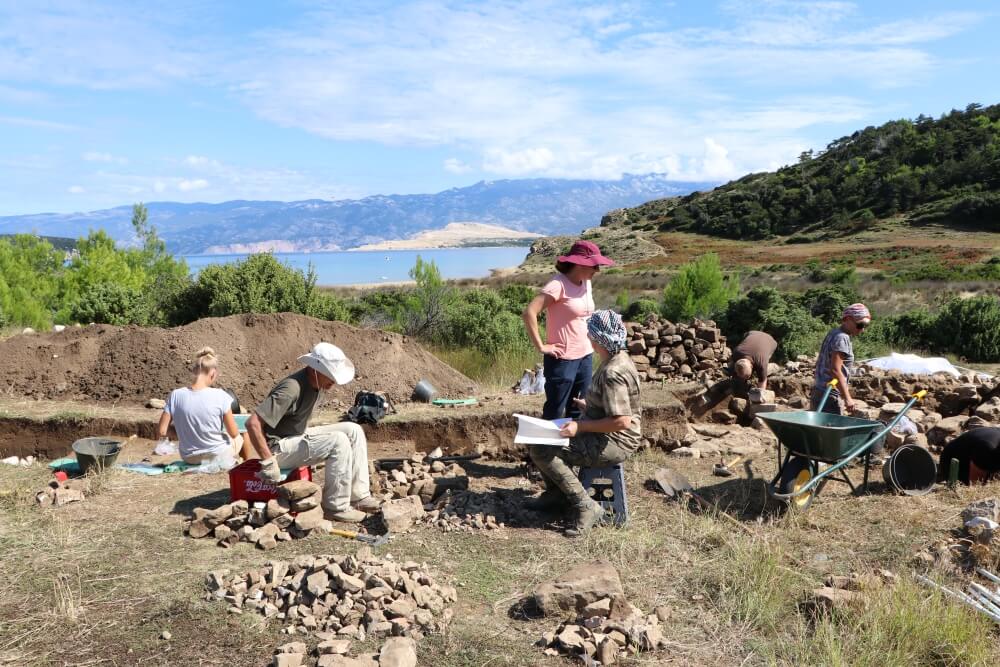
27 12 2021
Category: Adriatic, Rab, Research results
The remains of a Roman rural settlement, among which a villa and a possible thermal complex, were discovered by Polish and Croatian archaeologists on the island of Rab in Croatia, representing a rare and peculiar find on the NE Adriatic.
In September 2021, another excavation campaign took place as part of the project “Archaeological Topography of the Island of Rab”, which has been implemented for several years jointly by the Institute of Archeology of the Cardinal Stefan Wyszynski University in Warsaw (head Prof. F. Welc) and the Institute of Archaeology in Zagreb (head: Dr. Ana Konestra). This year’s season brought surprising and extremely important discoveries in the context of the entire Adriatic region. Among others, a unique Roman rural complex, which was located thanks to geophysical survey in Podšilo bay on Lopar peninsula in the north of the island, was excavated. The settlement consisted of several buildings dotting the bay, among which a large building with an internal courtyard, that is, with the layout of a typical Roman villa.
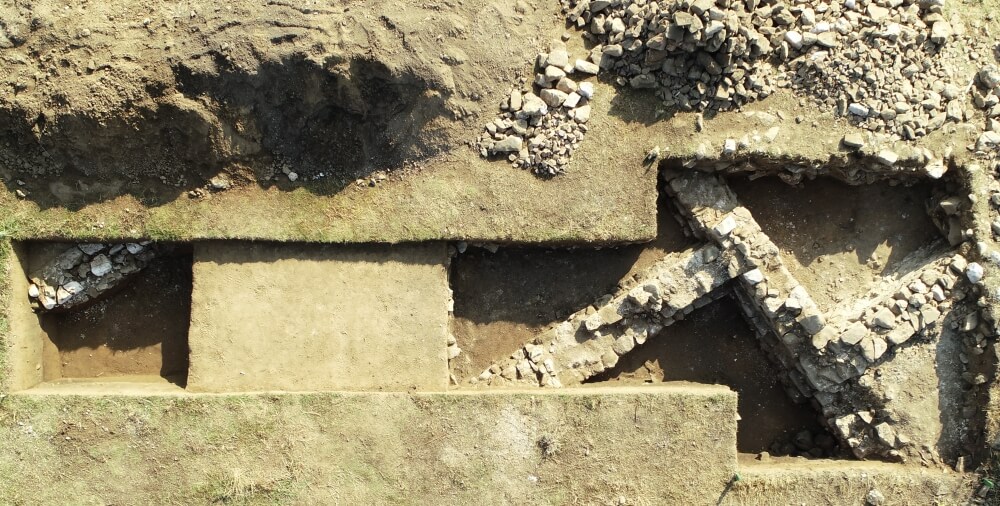
Beli Grad site, remains of a Roman villa. Photo Kamil Rabiega
It turned out that the complex had many phases of use, starting from the Roman period up to late antiquity, when wooden architecture was erected in the remains of the already ruined villa. While it is still unclear whether these changes signal the influx of new population, perhaps from continental areas or a demise of the island’s rural economy and landownership, imported African and eastern Mediterranean amphorae (oil, wine, and fish products vessels), fine tableware, kitchenware, glassware, and numerous bronze objects, including coins, have been found in the archaeological contexts under study, testifying to a vibrant connectivity of the Adriatic with the wider Mediterranean well into the 6th century. Few fragments of pottery might perhaps be dated even later, in the 7th c., thus indicating a truly long occupation of this rural area.
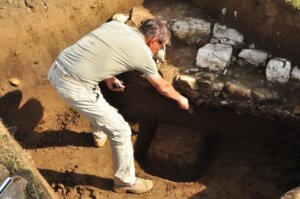
Research on the cohesion of the soil under the foundation of the late Roman wall at the Beli Grad site. Photo Kamil Rabiega
So far, such evidence of architectural transformation and the accompanying movable finds have rarely been excavated in the wider eastern Adriatic area. Thus, the site in Podšilo bay offers a rare insight into the most tumultuous period of late antiquity, that of the Ostrogothic reign, the recapturing of the Adriatic by the Byzantine empire and the movements of peoples from the north towards the coast and, eventually the islands. Also, this is a period of environmental changes, so the data gathered will be crucial in understanding coping strategies, changing sustenance practices and societal adaptation to new historic and, possibly, natural events.
Thanks to this year’s georadar prospection, another monumental building, probably paved with mosaics (as evidenced by surface finds of numerous tesserae from mosaics floors), was found at the Podkućine site in the southern part of Podšilo bay. The plan of the building and the finds of specific bricks for the construction of raised heated floors suggest that it may have served as a thermal complex, a fact that will be examined during next year’s excavations.
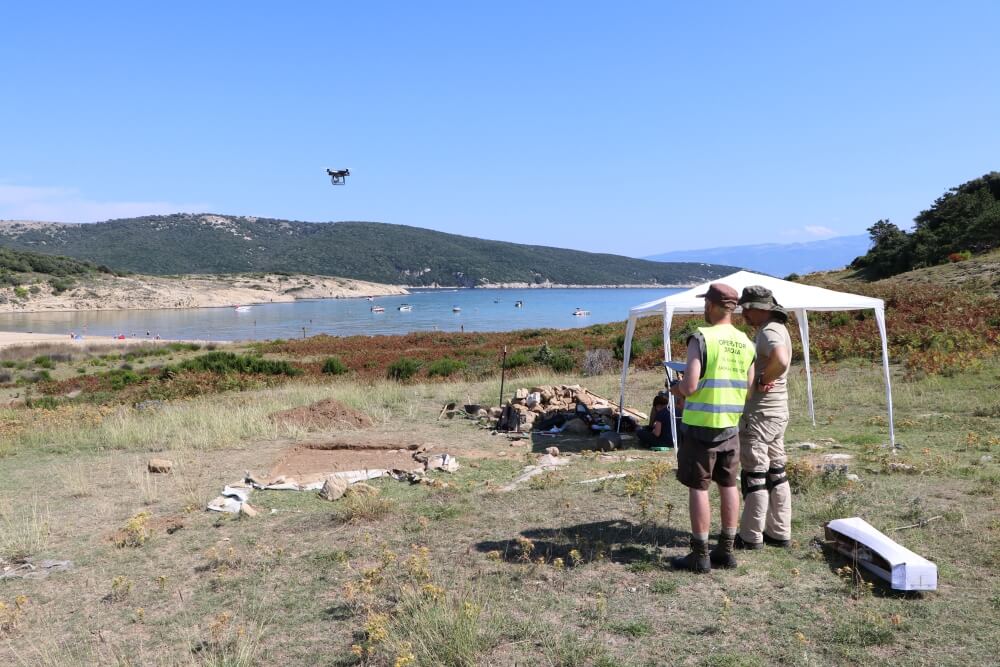
Documenting the excavation at the Podkućine site using a drone. Photo Bartosz Nowacki
These activities are funded by the National Science Center (Collapse, crisis or transformation? Correlation of Late Antique Settlement Transformations with Environmental and Climatic Changes in the North-Eastern Adriatic Region Based on the Results of Geoarchaeological and Palaeoclimatic Studies (ID: 2020/37/B/HS3/02458), Institute of Archaeology UKSW, Institute of Archaeology in Zagreb, Lopar Municipality on the Island of Rab and by the Centre for Systemic Risk Analysis at the Faculty “Artes Liberales”, University of Warsaw (project 4. Action I.3.2. “Systemic Risk Research Project” under the “Excellence Initiative – Research University” program).
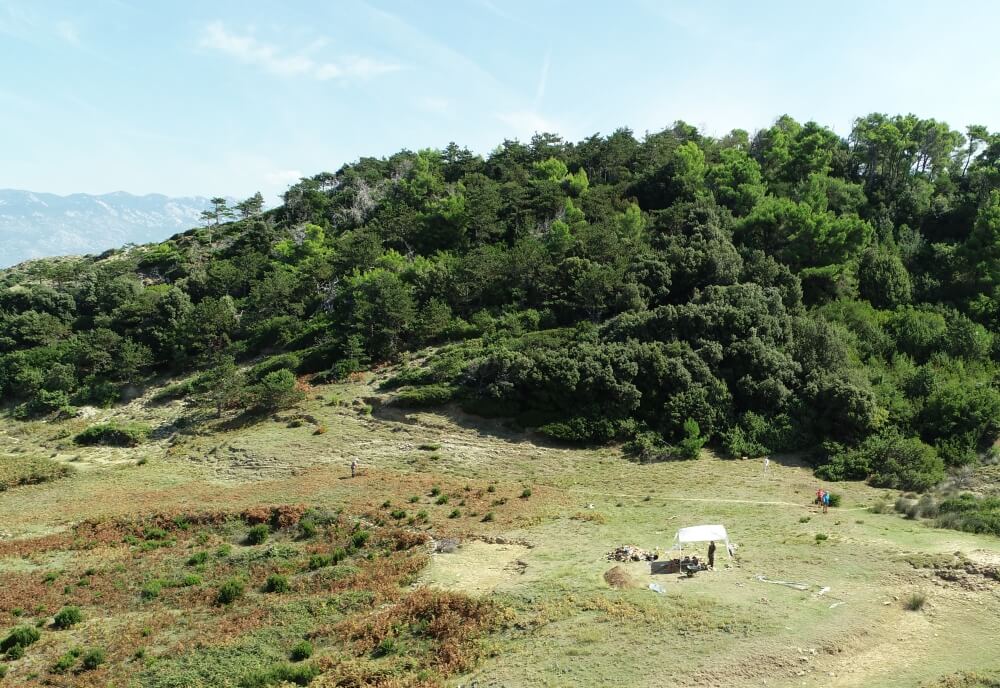
Podkućine site in Podšilo Bay – geophysical survey revealed another monumental building. Photo by Kamil Rabiega
We also recommend a video in which the research directors, Prof. Fabian Welc and Dr. Ana Konestra, talk about the results of the latest excavation campaign:
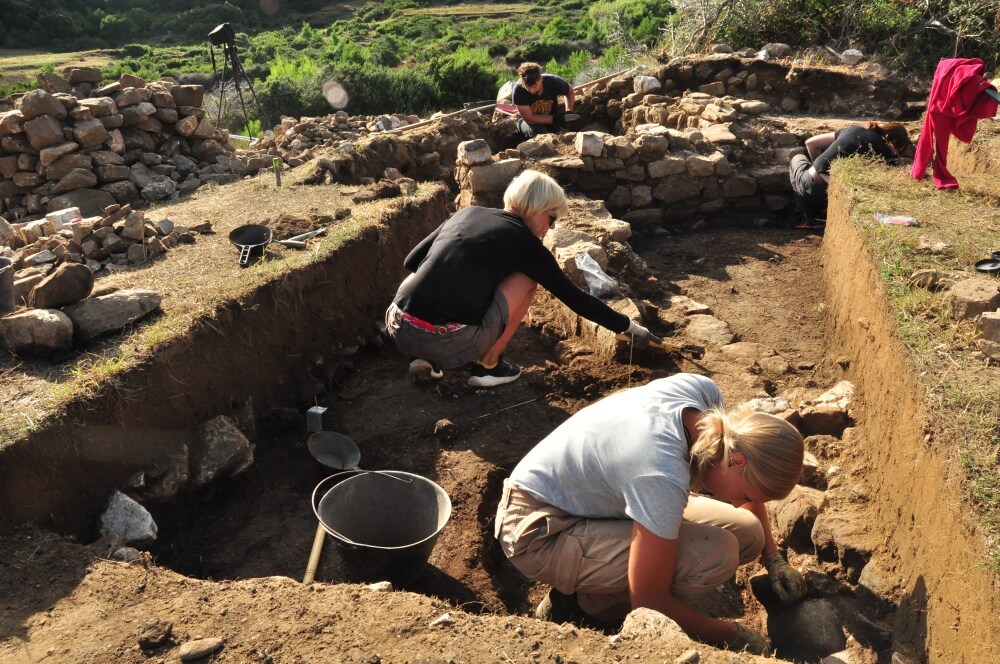
Excavations at the Beli Grad site. Photo Kamil Rabiega
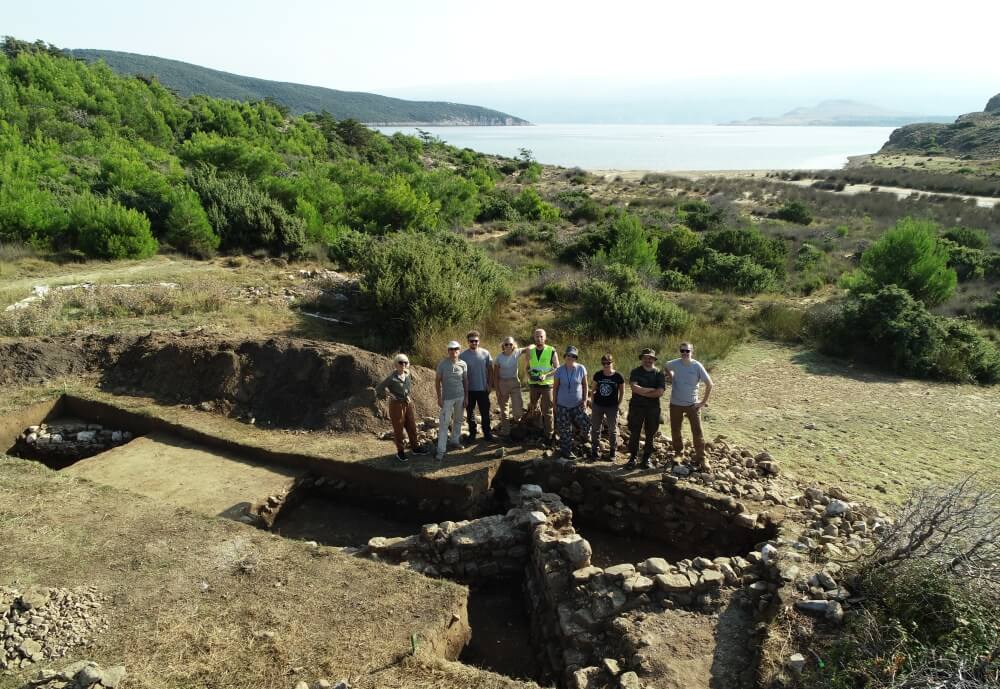
Photo of the team working on the island of Rab. Photo Kamil Rabiega